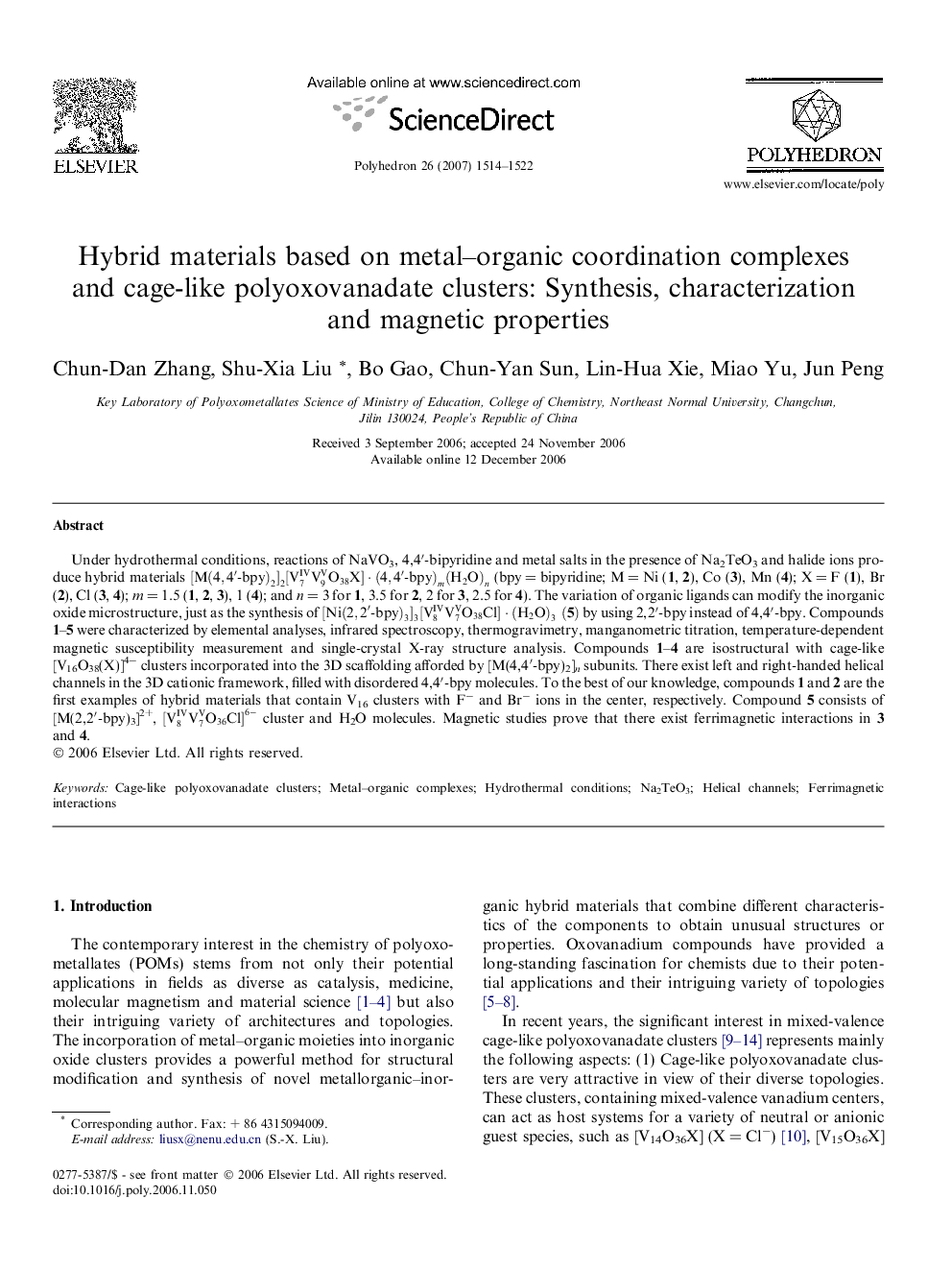| Article ID | Journal | Published Year | Pages | File Type |
|---|---|---|---|---|
| 1338736 | Polyhedron | 2007 | 9 Pages |
Under hydrothermal conditions, reactions of NaVO3, 4,4′-bipyridine and metal salts in the presence of Na2TeO3 and halide ions produce hybrid materials [M(4,4′-bpy)2]2[V7IVV9VO38X]·(4,4′-bpy)m(H2O)n (bpy = bipyridine; M = Ni (1, 2), Co (3), Mn (4); X = F (1), Br (2), Cl (3, 4); m = 1.5 (1, 2, 3), 1 (4); and n = 3 for 1, 3.5 for 2, 2 for 3, 2.5 for 4). The variation of organic ligands can modify the inorganic oxide microstructure, just as the synthesis of [Ni(2,2′-bpy)3]3[V8IVV7VO38Cl]·(H2O)3(5) by using 2,2′-bpy instead of 4,4′-bpy. Compounds 1–5 were characterized by elemental analyses, infrared spectroscopy, thermogravimetry, manganometric titration, temperature-dependent magnetic susceptibility measurement and single-crystal X-ray structure analysis. Compounds 1–4 are isostructural with cage-like [V16O38(X)]4− clusters incorporated into the 3D scaffolding afforded by [M(4,4′-bpy)2]n subunits. There exist left and right-handed helical channels in the 3D cationic framework, filled with disordered 4,4′-bpy molecules. To the best of our knowledge, compounds 1 and 2 are the first examples of hybrid materials that contain V16 clusters with F− and Br− ions in the center, respectively. Compound 5 consists of [M(2,2′-bpy)3]2+, [V8IVV7VO36Cl]6- cluster and H2O molecules. Magnetic studies prove that there exist ferrimagnetic interactions in 3 and 4.
Graphical abstractUnique organic–inorganic hybrid compounds have been separated under hydrothermal conditions, and are constructed of metal–organic complexes and cage-like vanadium clusters. They indicate novel structures and attractive magnetic properties. Furthermore, two new clusters [V16O38F]4− and [V16O38Br]4− are reported.Figure optionsDownload full-size imageDownload as PowerPoint slide
